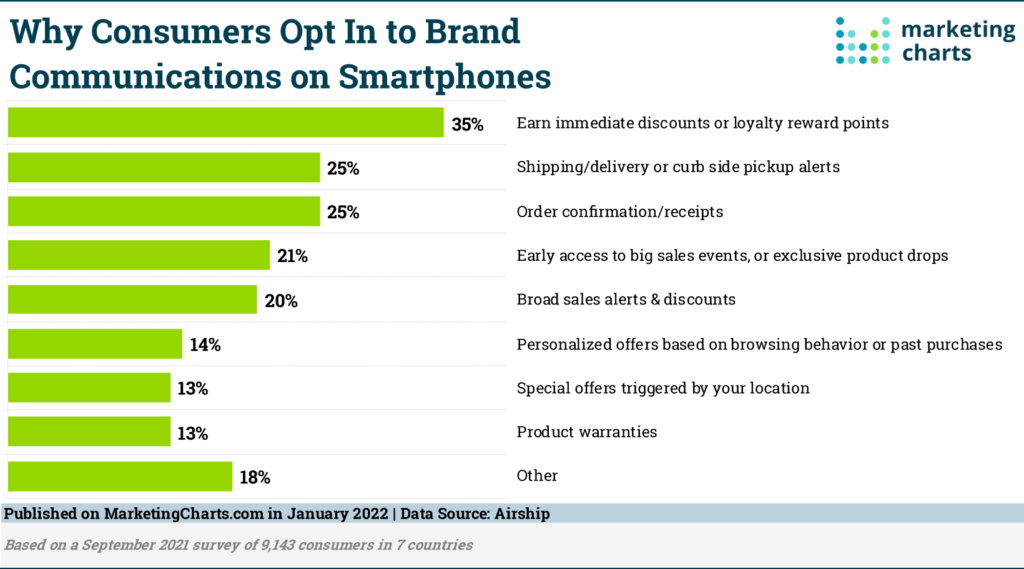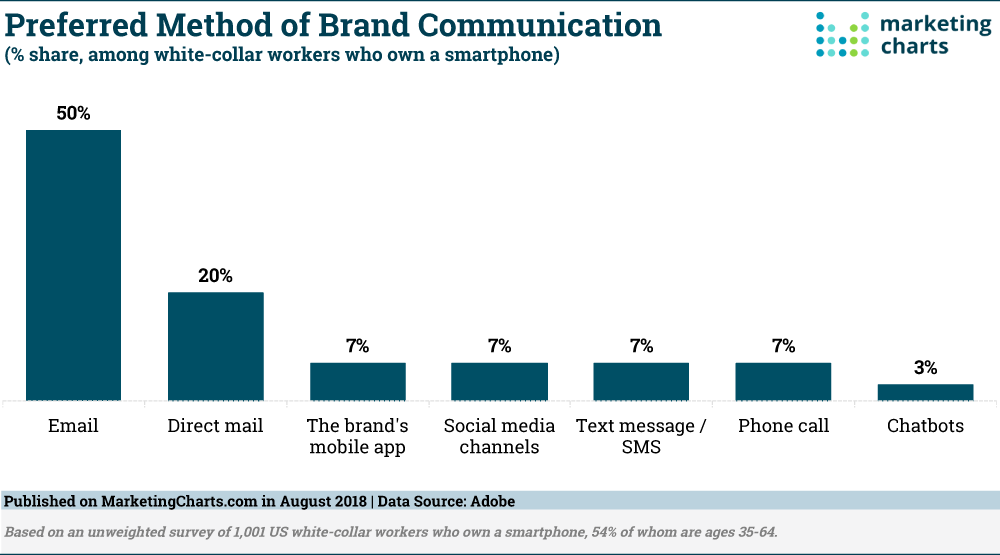
Permission Marketing: Creating Trust To Prevent Opt-Outs

Laws are continually changing to give consumers more control over their personal data and how companies use it. Comprehensive (also called omnibus) consumer privacy legislation is the most common type of bill being considered—with almost 70 bills in 25 states and the District of Columbia. These bills regulate businesses’ collection, use, and disclosure of personal information and provide an express set of consumer rights for collected data, such as the right to access, correct, and delete personal information collected by businesses.
Furthermore, evolving consumer attitudes toward marketing communications and data privacy have also had an impact on the way marketers need to approach their audiences. For example, 47% of consumers say they get too many notifications, and while many say they will adjust notification settings, studies have found that 51% will opt out altogether.
So, how can marketers ensure they can reach their target audiences while also respecting consumer data privacy rights? The answer is to prevent opt-outs by maintaining trust. Let’s cover exactly how marketers can do that.
What Is Permission Marketing Anyways?
Permission marketing is a type of online marketing strategy that focuses on using voluntary opt-in tactics to reach and engage customers. Instead of relying solely on traditional outbound advertising techniques, such as cold calls or e-mail blasts, permission marketing seeks to gain potential customers’ consent before engaging them in promotional activities. In its best form, it’s anticipated, personal and relevant.
So what makes permission marketing so effective? It’s because it creates an ongoing dialogue between a business and its customers that is based on mutual trust. Customers can decide if they want to receive communications from you, when they wish to receive them, and what type of communications they want.
Strategies For Marketing Opt-Out Prevention
While permission marketing is an effective way to reach your target audience, you’ll want to use every opportunity to ensure customers don’t opt out of your campaigns. To do this, here are some steps you can take:
Tell Customers What To Expect
The number one way to prevent opt-outs is to tell customers what to expect from you. Make sure your communications are clear, concise, and honest about the type of communications customers should expect to receive. For example, if customers know they won’t receive more than one e-mail, one call, and one SMS a month, it can help prevent concerns over full inboxes or multiple interrupting phone calls.
Additionally, if you don’t share information for affiliate marketing, be sure to let them know. This can offer comfort to customers concerned about privacy and unwanted solicitations. Information-sharing language should be part of your privacy policy anyway as well as steps a customer can take to limit sharing.
Give Your Customers Control
Allow the customer to control the timing, messaging, and method of communication rather than an all-or-nothing opt-out. Having control over the way brands communicate with their customers is essential for more than 46% of US respondents.
You can take opting out of individual channels one step further by offering messaging filters. For example, offering the option to choose the subject matter. “Only text me about discounts or offers…” or “only send me updates concerning my account…” can be the difference between opting out completely and maintaining some contact with customers.
Provide Incentives To Increase Opt-Ins
Your audience, especially your new prospects, needs incentives to sign up for your opt-in e-mails. Make it clear what they gain by opting in – or won’t gain by opting out and remind them whenever possible on your website. You can offer exclusive content, discounts, free shipping, free eBooks, or access to new products before they are released. Keep in mind that the incentive should be relevant to your audience and worth their time to attract new visitors who will choose to opt-in.
Keep It Personalized
Even though personalization is not a top reason for enrolling in notifications, a lack of personalization can impact whether a consumer will drop out of them. In fact, 27% of US consumers say they will opt out of notifications if they feel those notifications are irrelevant or not personalized to their needs.
Make Opt-Out Instructions Clear
If you love something, let it go. Understand that people will opt out. Don’t make opt-out instructions and the information you use or share hard to understand. I’m not saying remind them to opt out but make sure they know how to opt-out. For example, provide an unsubscribe link in the footer of your e-mails or a simple unsubscribe process on the website that is easily accessible and intuitive (no tricky language). Note: if your emails are marketing-related, you must provide an opt-out link. See more about CAN-SPAM
Wrapping It Up
Permission marketing, when implemented correctly and respectfully, can be an effective way to connect with customers. With the right strategies in place, you will have a higher chance of preventing opt-outs from your campaigns. At the end of the day, it’s important to remember that permission marketing is all about trust: customers have to feel comfortable and trust your brand enough to give you permission to keep the conversation going. Make sure they do.
By providing transparency, giving customers control over the type of communication they receive, offering incentives that are relevant to their needs, personalizing communications, and making it easy for customers to opt-out, you can be one step closer to preventing opt-outs from your campaigns.
This will also increase customer loyalty, brand awareness, and engagement in the long run. It’s a win-win for both you and your customers!


